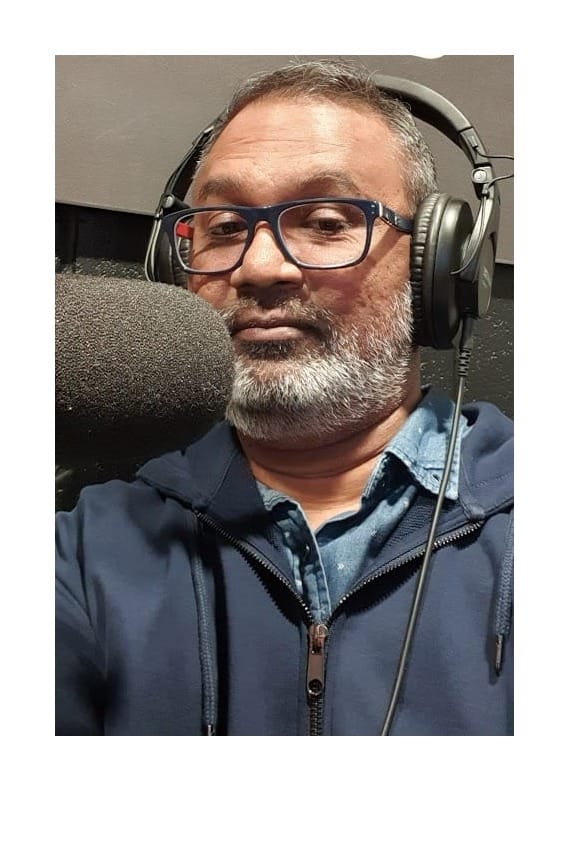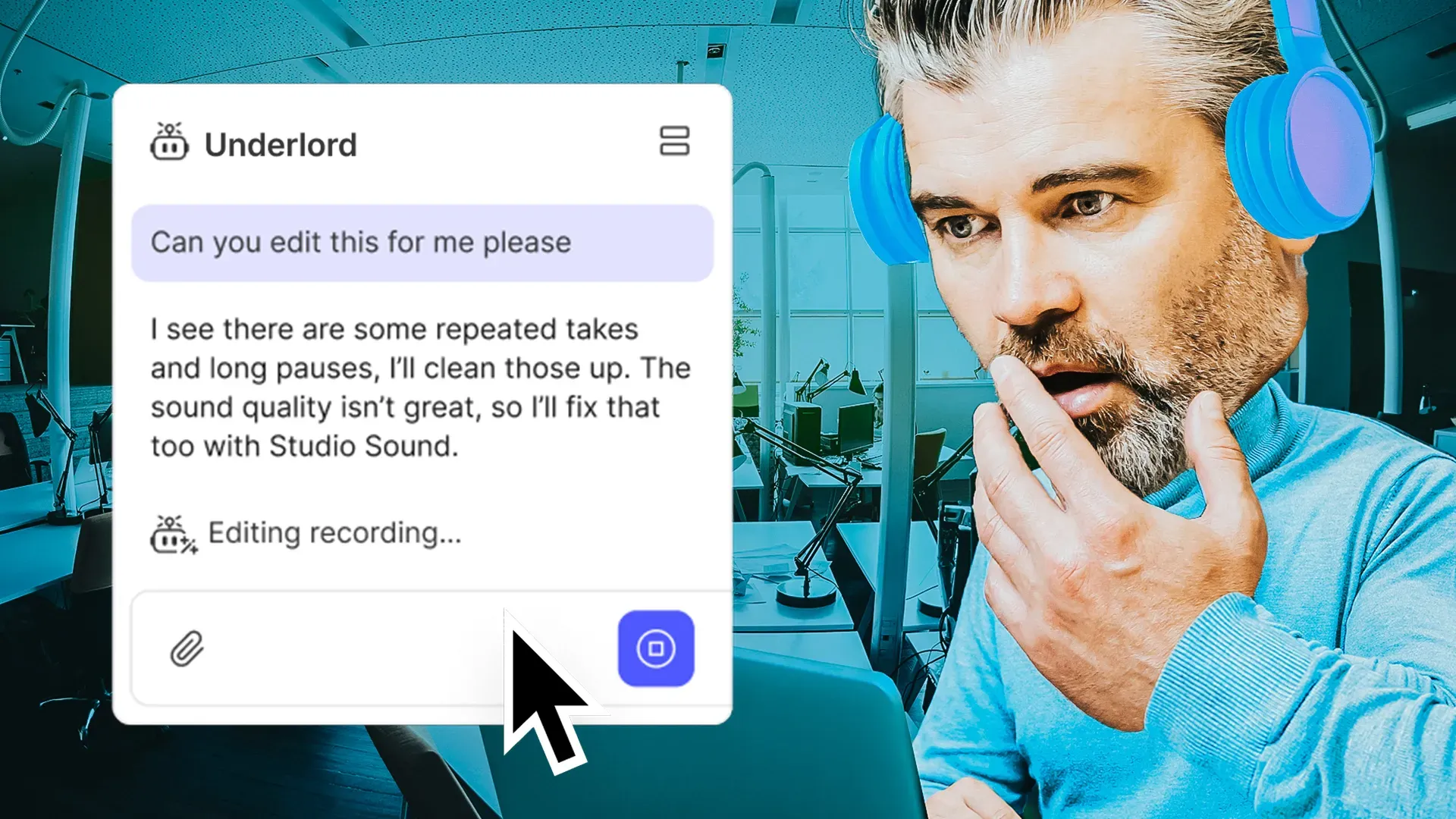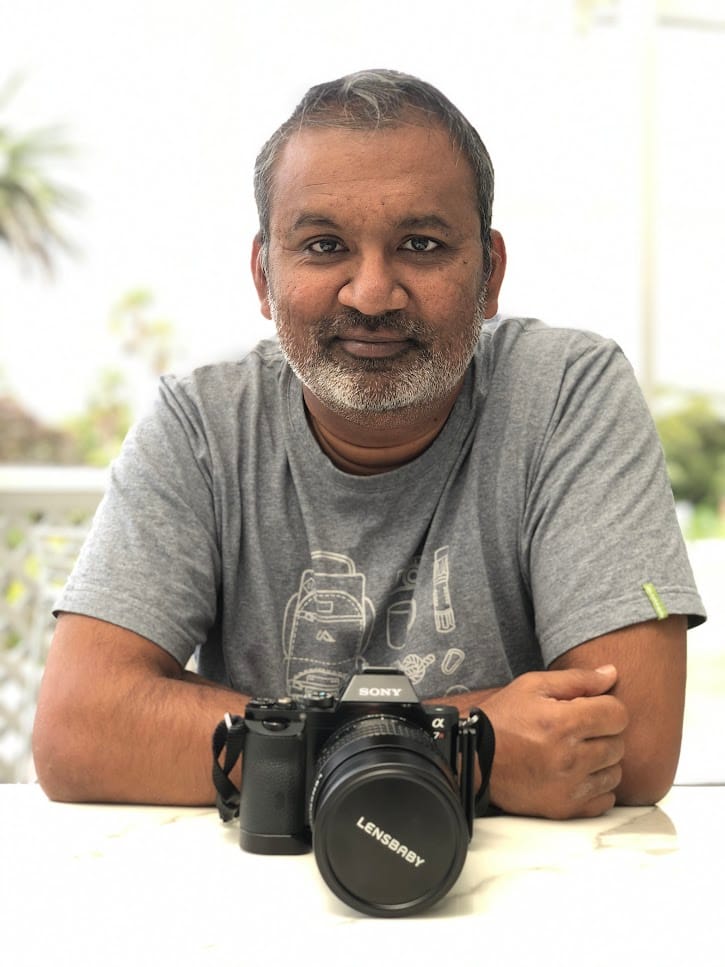I never intended to podcast in the first place. When I was living in Avondale, I saw a post on a local community page: an organisation called Crescendo was inviting pitches for shows on the community radio station they ran at the time.
It sounded interesting, so I sent in a pitch for a show on photography—just as a joke. Funnily enough, the producer vetting applications found mine compelling. And the rest, as they say, is history.

At the radio station
At the station, I learnt the basics of audio, how to put together a playlist, and the art of presenting ideas on air. It was a great experience, and I should thank Riccardo Ball—a true legend. In fact, credit goes to him for naming the podcast: Photo Country.
Riccardo's the dude at the bottom left corner!
As I continued my journey into audio, I fell in love with the medium. Through podcasting, radio has found a second wind. As a creator, you are literally in someone’s ear. Video podcasts may be all the rage, but I strongly believe radio/audio has a unique place in mass media. With audio, the listener collaborates with the creator to build the visual image in their mind—which is a gift for any storyteller.
Here are two of my favourite shows:
Teamistry is a documentary-style podcast about how teams solve complex problems together. Each episode dives into a real-world project—like restoring a failing network or reimagining a supply chain—and follows the engineers, designers, and leaders who stitched it all into working order. It’s crisp, story-driven audio that reveals the hidden architecture of collaboration: the missteps, the breakthroughs, and the quiet decisions that turn chaos into craft. If you love behind‑the‑scenes tales of invention and the human dynamics that power them, Teamistry is a smart, satisfying listen.
This is a narrative podcast about the places that shape us—and the people who fight to belong. Each episode unpacks a true story where a home becomes more than four walls: a sanctuary, a battleground, a memory palace. From unlikely neighbours forging bonds to families rebuilding after upheaval, it weaves intimate reporting with cinematic sound design to evoke the texture of lived rooms and streets. It’s tender without sentimentality, probing without cynicism, and leaves you with that quiet ache of recognition: the sense that home is both where we come from and what we choose, one hard-won moment at a time.
I cut my teeth on interview‑based shows. There is an art to interviewing and choreographing a conversation that guides the listener through a guest’s story. While I’d love to make a narrative show, today I’m leaning toward a hybrid: narrative plus talking heads.
What has helped me - The advent of AI based editing

Underlord from Descript.com
If there’s one tool that has revolutionised how I produce content, it’s Descript. I’ve been an early adopter and love how it turns timeline‑based editing on its head. Today, I can’t imagine a workflow without it. It’s my go‑to tool for all things content.

Descript is the rare tool that makes creative flow feel inevitable. I use it for everything because it turns messy recordings into clean, publishable stories with frightening speed. Text-based editing lets me cut audio and video like a document; studio-grade transcription makes research and assembly painless; and Underlord handles the heavy lifting—cleanup, levelling, filler-word removal, even style-matched voice fixes—so I can stay in the craft instead of the timeline. It’s where my interviews become narratives, my rough ideas become finished episodes, and my workflow finally feels humane.
Podcasting has added another arrow to my quiver of skills—and it’s one worth its weight in gold.
Podcasting is great for brands and businesses - why?
- Reach: Podcasting delivers long-form attention; listeners stay with you for 20–40 minutes, building deep brand familiarity.
- Authority: Expert interviews and narratives position your brand as a trusted voice, not just an advertiser.
- SEO + Repurposing: Transcripts and clips fuel blogs, social posts, and newsletters—one recording becomes a content engine.
- Community: Regular episodes create a rhythm; subscribers feel connected and become advocates over time.
- Cost-effective: Compared to video, audio is lighter to produce yet punches above its weight in impact and loyalty.
In the end, I love podcasting because it feels like the most human medium I’ve ever worked in. It’s intimate, patient, and deeply collaborative—between host and guest, and between creator and listener. With a mic and a story, you can cross borders, build trust, and turn scattered ideas into a shared moment of meaning. That alchemy—voice to imagination, conversation to connection—is why I keep coming back. And with tools like Descript and a hybrid narrative approach, the craft only gets sharper. Audio isn’t just content; it’s companionship.


